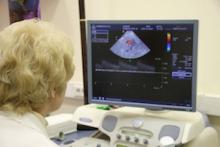High-Speed Broadband Access Becomes Lifeblood for Modern Healthcare
More than ever before, innovations in healthcare technology are saving lives. A series of 2015 stories from around the nation highlight the importance of fast, affordable, reliable connectivity in using those technologies to serve patients in both urban and rural settings.
Broadband Speed and Medical Crises
The first story comes from Craig Settles, an expert on broadband access issues. In his line of work, Settles is constantly thinking about, talking about, and writing about the many virtues of broadband technology. But Settles explains that after recently suffering a stroke that required rapid medical attention, he gained a new perspective on the issue.
When someone suffers a stroke, they have three hours to get serious treatment or they often will not recover from its debilitating effects. I was lucky, but...while I worked through my recovery and rehab, a thought hit me: The process of my recovery would have been limited -- if not actually impossible -- had I been living in a small, rural or even urban low-income community without broadband.
Better Broadband, Better Medical Care in Rural West Virginia
The Charleston Gazette-Mail profiles the importance of broadband access at the St. George Medical Clinic in rural West Virginia. The clinic is wedged inside of a deep, wooded river valley, where geographic and topographic challenges interrupt access to reliable, high-speed broadband. In other words, the exact type of rural community Settles had in mind when he wrote about his frightening medical emergency.
But St. George Medical Clinic is different. With assistance from FCC funding, St. George recently laid a 12 miles of fiber optic line that delivers the hospital broadband access, essential to an increasing number of modern medical services. As the article explains:


